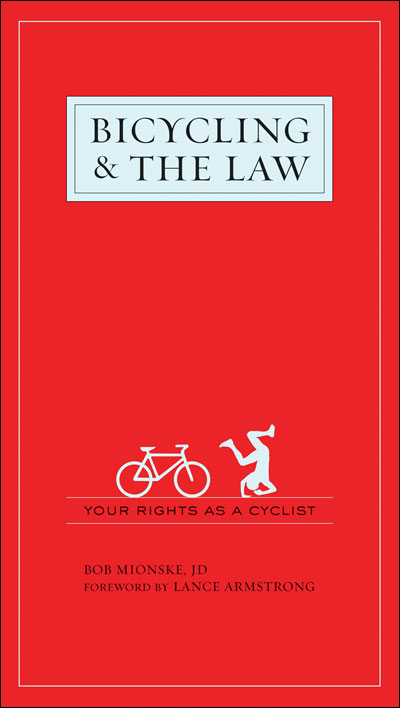Here’s where Mionske’s real value lies: His work concerning everything from road rage to “stop as yield” may be one of the best sources of education cyclists can turn to for evolving not just our behavior, but our activism in legal issues that have the potential to profoundly affect our ability to conduct group rides in an increasingly crowded landscape.

To purchase or learn more, click here.
Bicycling and the Law: A Red Kite Prayer Book Review
August 27, 2009 by Padraig
When I was a newbie, Eddie B.’s book, “Bicycle Road Racing,” was considered a must-read for anyone who was serious about bike racing. It’s the one and only book I can think of that experienced riders uniformly told me I should read. Of course, “Bicycle Road Racing” was only a necessity to those riders who wished to race. Today, there are as many books on how to be fast as there are flavors of ice cream at Baskin-Robbins.
I never believed there was a single book that each and every cyclist should read, at least, not until now.
Most of you out there have been following racing for some time and recall Bob Mionske’s fourth place in the Olympic Road Race at the Seoul Olympics (perhaps the best ride by a clean rider that year) and may have read Mionske’s “Legally Speaking” column in VeloNews. He has since been plucked away and now contributes to Bicycling. His online column can be found here. Unlike many books that grow from a columnist’s articles, “Bicycling and the Law” (VeloPress) isn’t just a compendium of Mionske columns; rather, it is an elegantly organized reference text that addresses the legal issues of every aspect of cycling, from the vehicle code to product liability not to mention some unusual points in between.
Most of us have at least one rider on each ride who attempts to talk some sense to the group when the peloton blows a stop sign or sprints into a second lane. Mionske’s voice is one of reason, as it should be, but he is unusual—exceptional, even—in that he knows the law and the way that cyclists actually ride, especially when on a group ride. It’s a Keatsian negative capability most of us would rather not contemplate.
A book like this could easily have served as an anarchist’s handbook to disruptive activism—Critical Mass in print—but Mionske’s effort serves a higher purpose, one that should inspire us all. His writing benefits from a perspective meant to achieve harmony, one where motorists don’t despise cyclists and products are good enough that liability lawsuits are unknown. The knowledge you gain in reading the book does come at a price: Mionske lays out in clear and unequivocal terms what your responsibility is when on the road. If we are to have any hope of coexisting peacefully with motorists, we will have to show greater respect for the law.
Rather than admonishing the reader to obey each and every law, Mionske simply serves as a tour guide: Here are your rights. Here are your responsibilities. Here are the risks. Here are the remedies. How you ride is up to you, but our actions have the ability to influence how likely we are to survive and how motorists perceive cyclists.
Here’s where Mionske’s real value lies: His work concerning everything from road rage to “stop as yield” may be one of the best sources of education cyclists can turn to for evolving not just our behavior, but our activism in legal issues that have the potential to profoundly affect our ability to conduct group rides in an increasingly crowded landscape. Mionske is one of the smartest, sanest and most helpful voices for cycling since Congressman James Oberstar. Is there any chance we can clone him?
